| "Rosalie" was built about 1820 near the bluff overlooking the river. It served as a Headquarters for the Union Army during the War Between the states. |
 |
 |
Also facing the river is "The Parsonage", built in 1852. |
| Although not equal to many of the homes, this place with its ornate porch caught my fancy. Currently for sale, it overlooks the river. |
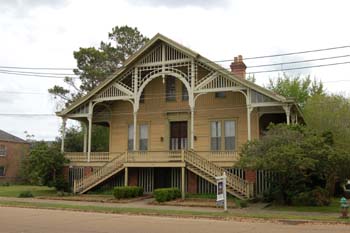 |
 |
Along the walkway atop the bluff is this memorial stone. It lists 209 names of individuals who died in a tragic fire at the Rhythm Club. Many more of the 700 people packed into the building were severely injured. Starting near the main entrance door, the fire quickly engulfed the structure due to Spanish moss that had been draped over interior's rafters as a decoration. In order to ensure there were no bugs in the decorative moss, it had been sprayed with petroleum-based Flit insecticide. Due to the dry conditions, flammable methane gas was generated from the moss and resulted in the destruction of the building within an hour. |
| I have no history of this "fixer upper". It was no match for the large tree that once towered over it. Located on the site of Fort Rosalie, it is slated for demolition. |
 |
 |
"Bontura" was built in 1851 by a free African-American, Robert Smith, who ran a carriage service. It was later operated as an inn by Portuguese merchant Jose Bontura. |
| The side yard and garden of "Bontura". |
 |
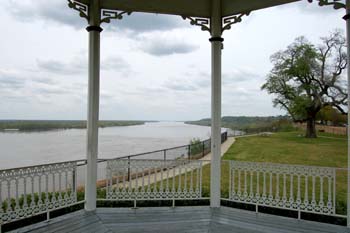 |
Across the street from "Bontura" is the city bandstand, with its expansive view up the river. |
| Looking downriver from the bandstand, one finds the bridge across the Mississippi River to Louisiana. Nestled against the foot of the bluff is Natchez Under the Hill, site of the original steamboat landing. Today a casino boat is moored there. |
 |
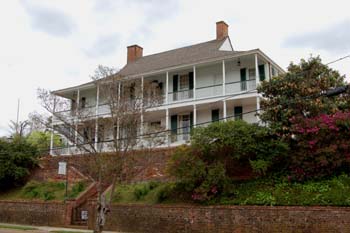 |
In 1797, Andrew Ellicott, in defiance of Spain, raised the American flag here. A year later he built what is now known as "The House on Ellicott Hill". |
| Azaleas and dogwoods were in full bloom. |
 |
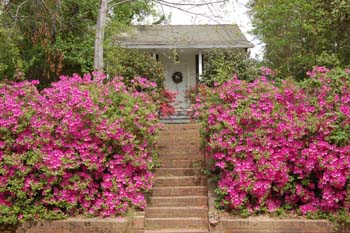 |
The profusion of azaleas practically hide this small home. |
| Built in 1857, "Stanton Hall" is one of the most magnificent and palatial residences of antebellum America. |
 |
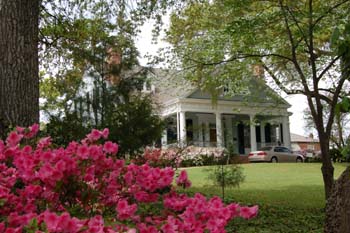 |
"The Burn" is now a B&B. |
| Lawyer John T. McCurran built "Melrose" in the late 1840's. Now owned by the National Park Service, the home is open to visitors. |
 |
 |
These two cabins at "Melrose" were slaves' quarters. |
| Natchez seems to have a number of homes that could use a new, loving owner to restore them to their former glory. |
 |

















